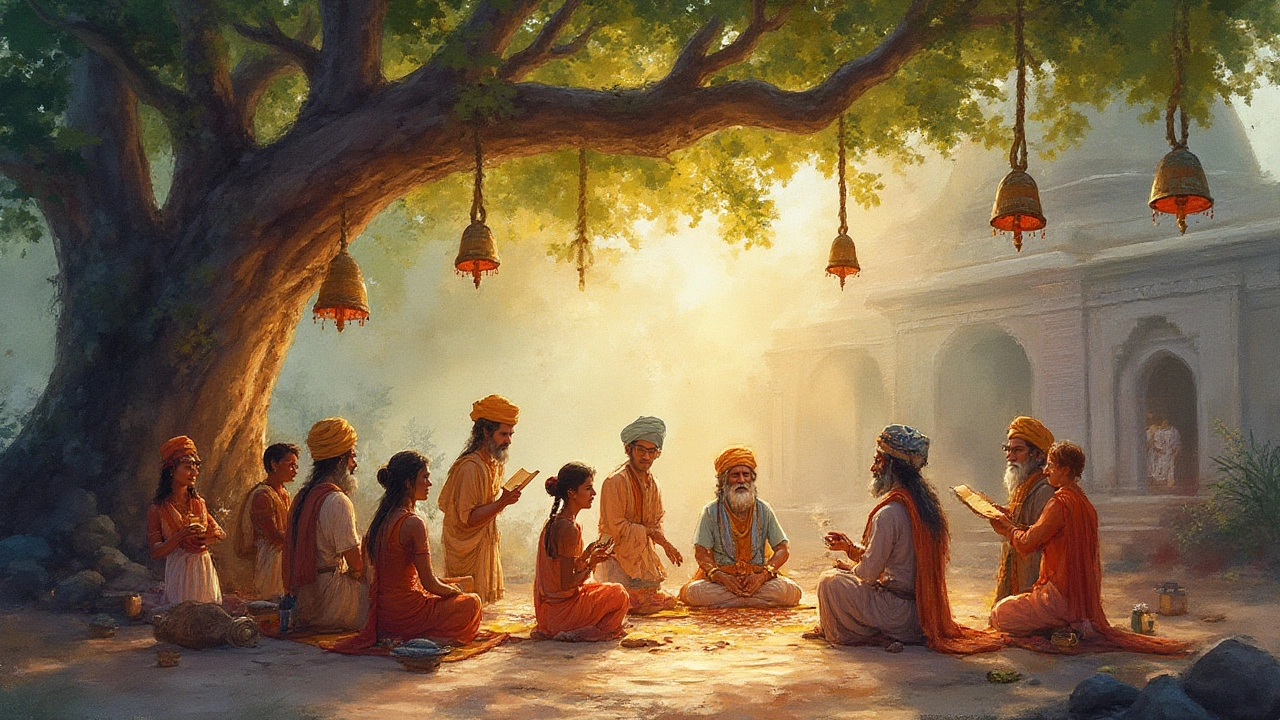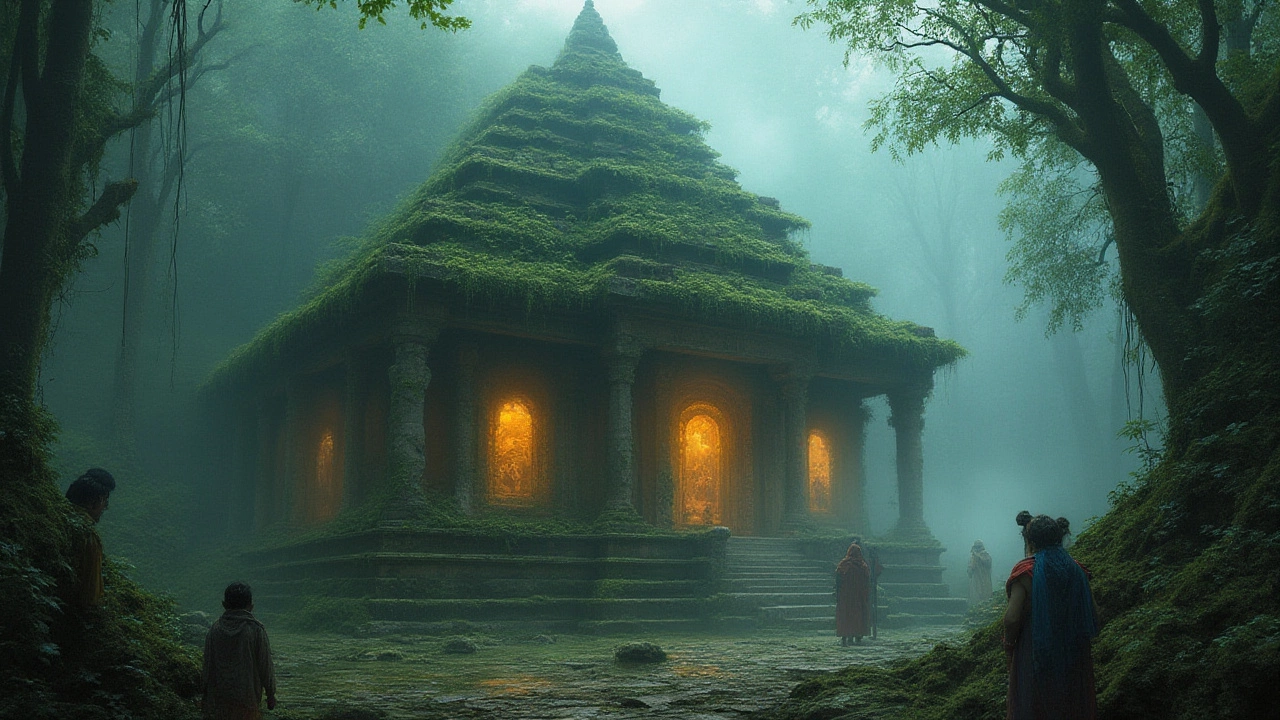Is There a 13th Jyotirlinga? Unveiling the Myths and Mysteries
 Jul, 3 2025
Jul, 3 2025
Picture a devotee at the gates of a famous Shiva temple, garlands in hand, hoping those stones hold more than just echoes of prayers. The idea of a 13th Jyotirlinga pops up in conversations, on temple tours, and even on WhatsApp forwards. Everyone wants to know: Is it real, or just another myth spun by faithful dreamers and eager storytellers? What if there actually was another holy spot, waiting to be discovered by those who dare to look? Let’s get right into the heart of the Jyotirlinga debate, where faith meets fact and old legends refuse to die quietly.
The Origin and Meaning of Jyotirlingas
Let’s break down the basics. Jyotirlingas are sacred shrines dedicated to Lord Shiva, one of Hinduism’s most powerful deities. These spots are believed to be where Shiva himself appeared as a pillar of light (that’s where “jyoti” or “light” comes in, while “linga” stands for Shiva’s symbol). Out of all the gods, Shiva seems to have some of the most mysterious stories going for him. According to the Shiva Purana (a key text dated somewhere between the 4th and 10th centuries CE), there are twelve primary Jyotirlingas across India. These twelve form a mystical map for Hindu pilgrims, and people literally cross states—sometimes barefoot, sometimes just fueled by faith—hoping these shrines will change their lives.
The twelve officially recognized Jyotirlingas are:
- Somnath (Gujarat)
- Mahakaleshwar (Madhya Pradesh)
- Omkareshwar (Madhya Pradesh)
- Kedarnath (Uttarakhand)
- Bhimashankar (Maharashtra)
- Kashi Vishwanath (Uttar Pradesh)
- Trimbakeshwar (Maharashtra)
- Vaidyanath (Jharkhand)
- Nageshwar (Gujarat)
- Ramanathaswamy (Tamil Nadu)
- Grishneshwar (Maharashtra)
- Mallikarjuna (Andhra Pradesh)
Each of these shrines has its own story, sometimes overlapping with local legends and sometimes tangled in controversy (for example, there’s still some confusion about the exact spot of Vaidyanath). But what about a 13th? That’s the real twist—because neither the Shiva Purana nor the ancient pilgrim guides mention a thirteenth. Yet, the rumor keeps coming back like an unsolved riddle.
Where Did the 13th Jyotirlinga Story Begin?
Most people who ask about a possible 13th Jyotirlinga have usually heard it from a family elder, a local priest, or somewhere on the internet. The myth doesn’t have a clear origin in traditional scriptures—the earliest, most respected texts stick to twelve. But in parts of India, especially where Shiva worship runs deep, there are tales of hidden or forgotten lingas. Some guides might show you a local temple, say, “This is the secret 13th Jyotirlinga—very powerful, not many know.” But if you trace these claims, what you get is folklore, not scripture.
Now, that doesn’t make the tales any less interesting. For instance, legends around the Mahakal forest in Ujjain or the Amarnath cave in Kashmir sometimes get thrown into the 13th Jyotirlinga debate. Some people claim that the Amarnath ice Shiva lingam is the hidden 13th. There’s even a story floating around about the Bhimashankar temple in Assam, since there’s one by the same name in Maharashtra already on the official list. So, you can see, confusion finds fertile ground when you mix faith, geography, and an itch for something secret.
| Possible 13th Jyotirlinga Candidates | Region | Common Belief |
|---|---|---|
| Amarnath Cave | Kashmir | Natural Shiva lingam of ice appears every year |
| Bhimashankar (Assam) | Assam | Locals claim it's the real Bhimashankar, not Maharashtra |
| Mahakal Forest | Ujjain | Hidden or secret 13th said to exist in esoteric texts |
| Mainpur (Nepal) | Nepal | Some local traditions suggest a thirteenth site here |
Still, there’s nothing solid in mainstream Hindu literature supporting an official thirteenth. But tradition in India is rich, and rarely does it let go of a good mystery. As the Indian philosopher and spiritual teacher Sadhguru puts it:
“Some things are not about logic. Faith can reveal a truth that the mind can’t always prove.”

Modern Claims and Pilgrimage Trends
The hunger for new holy sites doesn’t slow down, especially when people are searching for answers. Every year, millions go on pilgrimages, and more often than not, there’s someone asking about the *13th Jyotirlinga*. Social media and viral messages only fan the flames, sparking curiosity for off-the-map shrines. The temples that claim to be the 13th often see a spike in visitors after popular TV shows or local news stories. For example, after a 2023 documentary on mystical Shiva temples aired, Amarnath’s visitor numbers shot up by nearly 25% during the season, according to the Jammu & Kashmir Tourism Department’s posted data.
Some of this is genuine belief, some is just travelers caught by wanderlust. But temples focused on Shiva outside the official twelve have definitely capitalized on people’s desire for something “extra powerful.” Local priests will sometimes use stories of miraculous healings or once-in-a-lifetime visions to add fuel to the idea. Pilgrims end up treating these places with the same reverence they bring to Somnath or Kashi Vishwanath.
So how do you separate fact from fiction? For one, check the source—ancient scriptures, not social posts, are the real deal in Hindu traditions. If the Shiva Purana, Linga Purana, or even the Skanda Purana don't mention the spot, chances are it’s not “official.” Still, faith communities often decide for themselves what holds meaning. You might not find a 13th Jyotirlinga in the texts, but you’ll definitely find families and local communities whose devotion makes you question what’s more real: the written word or lived faith.
If you’re planning a pilgrimage, here are some tips:
- Always ask about the temple's history—see if there are ancient references.
- Talk to several locals, not just temple guides—they usually know the backstory and what’s real or new.
- Don't get swayed by someone promising miraculous blessings in exchange for big offerings. The twelve Jyotirlingas themselves don't guarantee miracles, either.
- Check if there's recognition by reputable religious trusts or state governments; official shrines are usually well-marked.
This whole search becomes less about geography and more about personal faith. So, the journey is half the story.
The Enduring Appeal of Jyotirlingas and Continuing Mysteries
What is it about these twelve shrines that creates such a pull, and why does the rumor of a 13th Jyotirlinga refuse to fade? Part of it is human nature—the urge to find meaning just beyond official maps. Maybe for some, visiting all twelve still feels incomplete, like there’s some thirteenth piece they need to feel spiritually whole. And honestly, the stories don’t hurt. In a land where a stray stone can suddenly become sacred, the idea of a secret 13th keeps the search alive for generations.
If you look at pilgrimage numbers from the Indian Ministry of Tourism (tourism.gov.in), visits to Jyotirlinga sites have nearly doubled in the past decade. Social trends show people looking for deeper, sometimes personalized, spiritual experiences—think weekend yoga at Kedarnath or full-moon prayers at Trimbakeshwar. This is where the line blurs between myth-making and marketing: a 2022 poll of regular temple-goers in Maharashtra found that nearly 30% believed in the possible existence of a 13th Jyotirlinga, even when told that scriptures didn’t back it up.
So maybe the real answer isn’t about the number. It’s about what these places represent: a meeting ground between human longing and divine mystery. That’s the stuff of legends—always one step ahead, never fully caught.